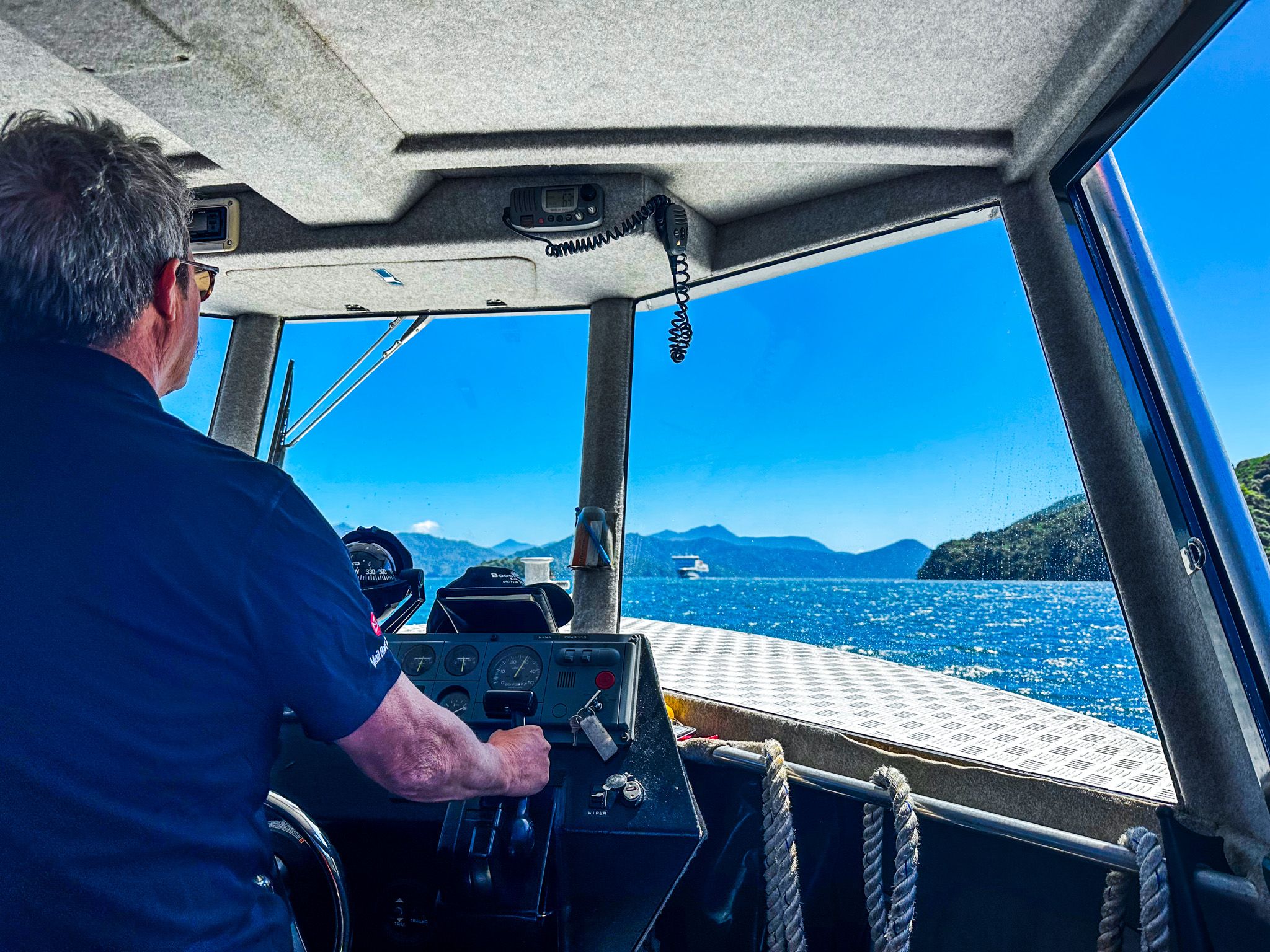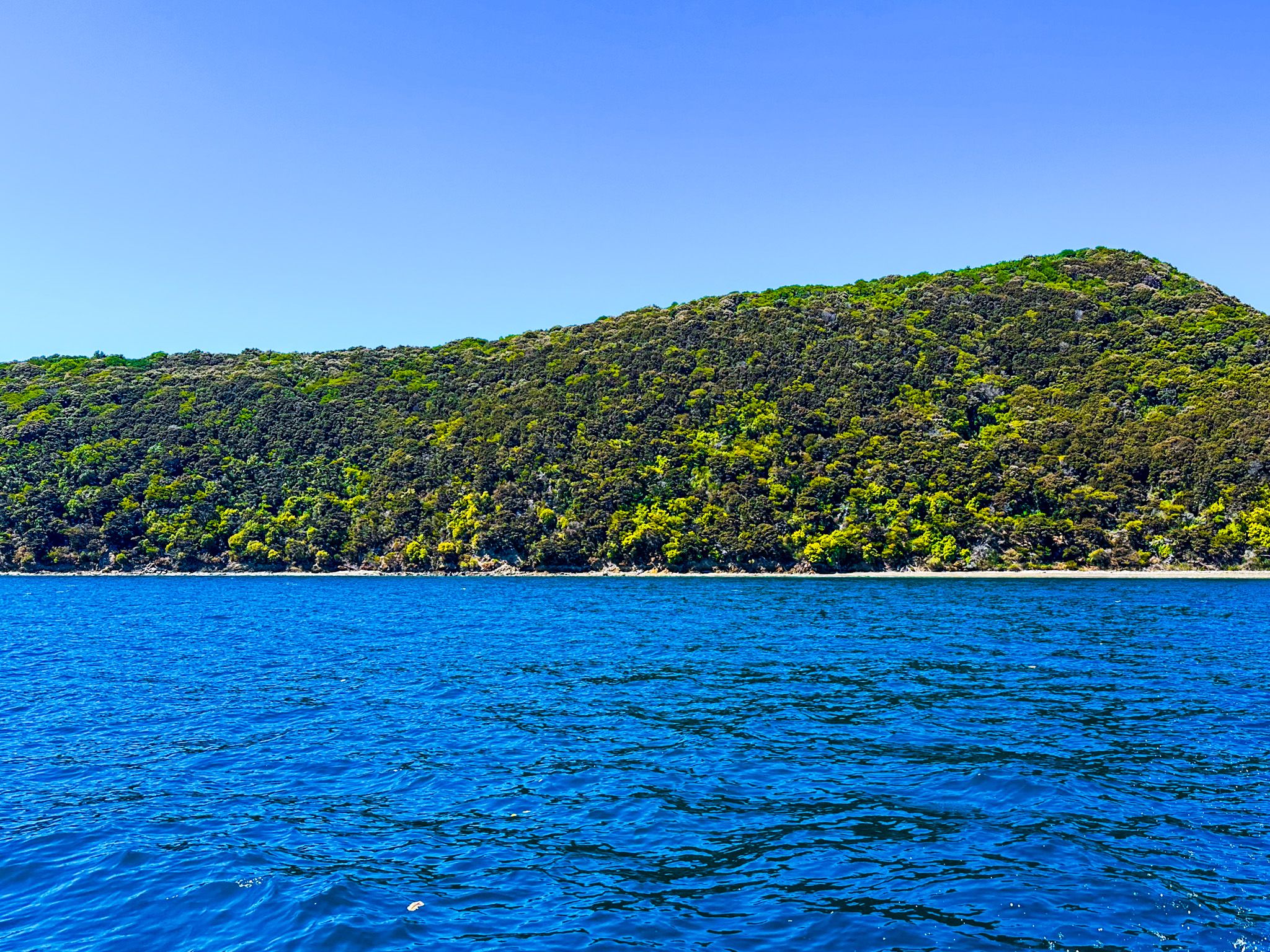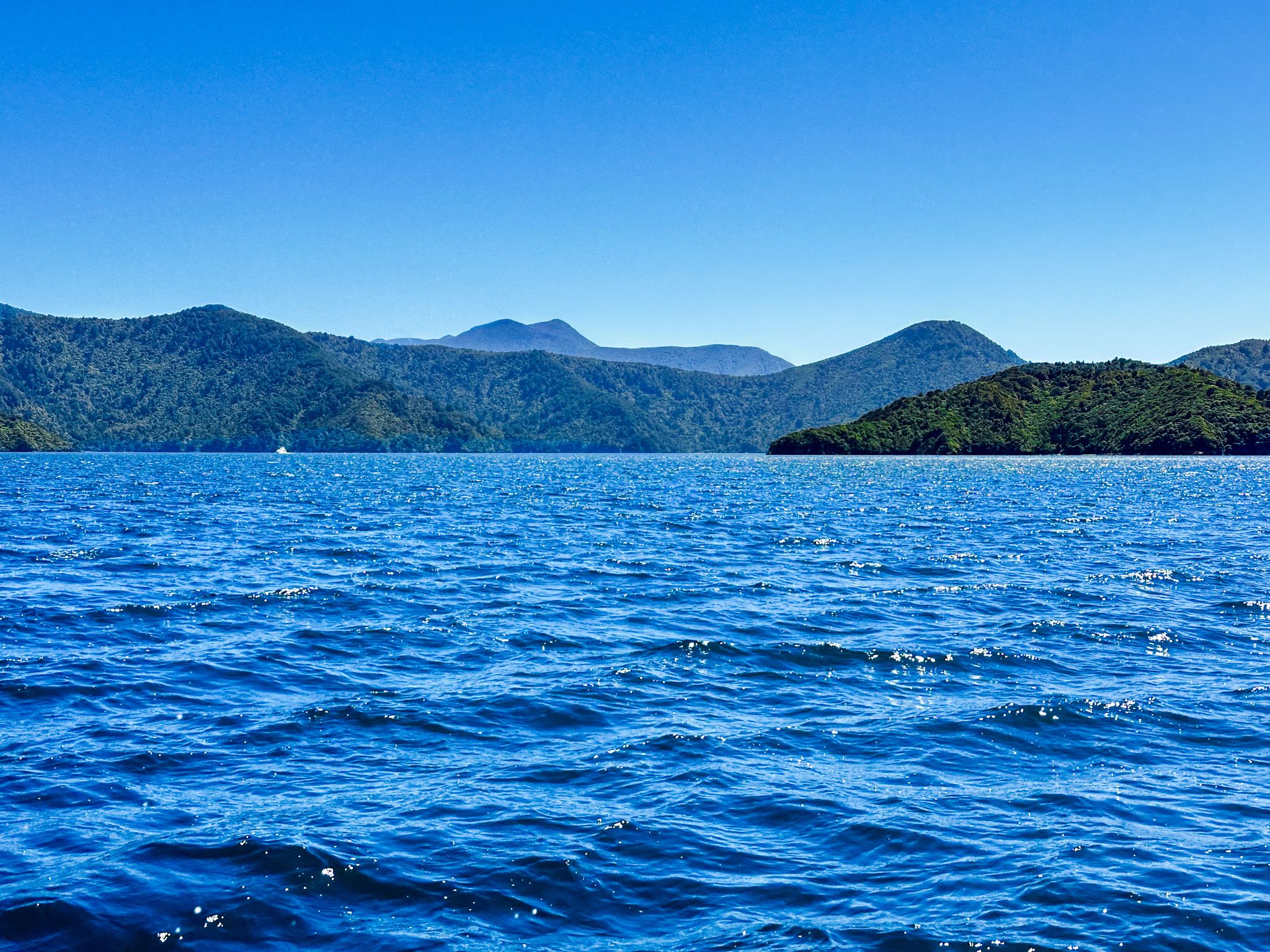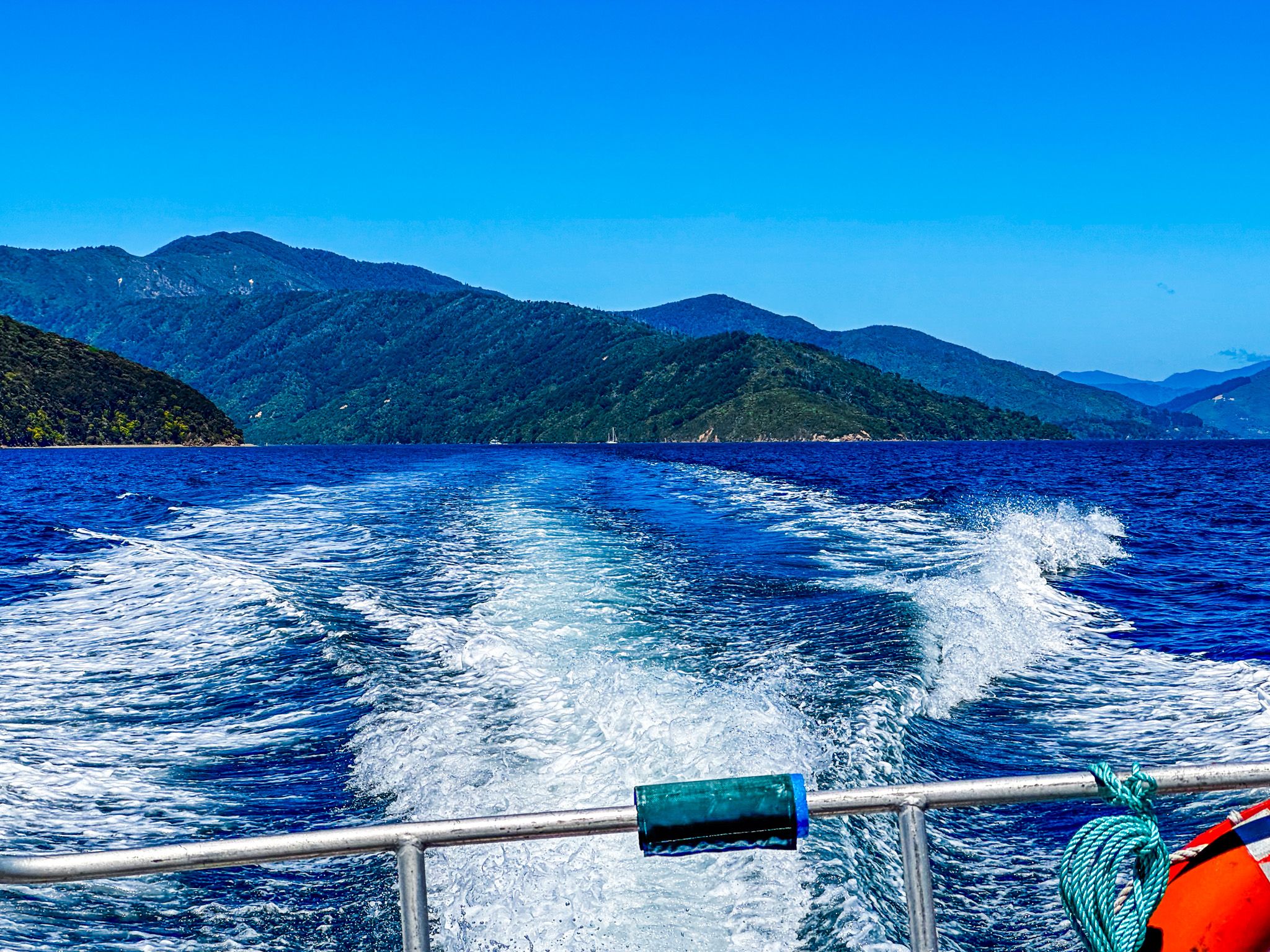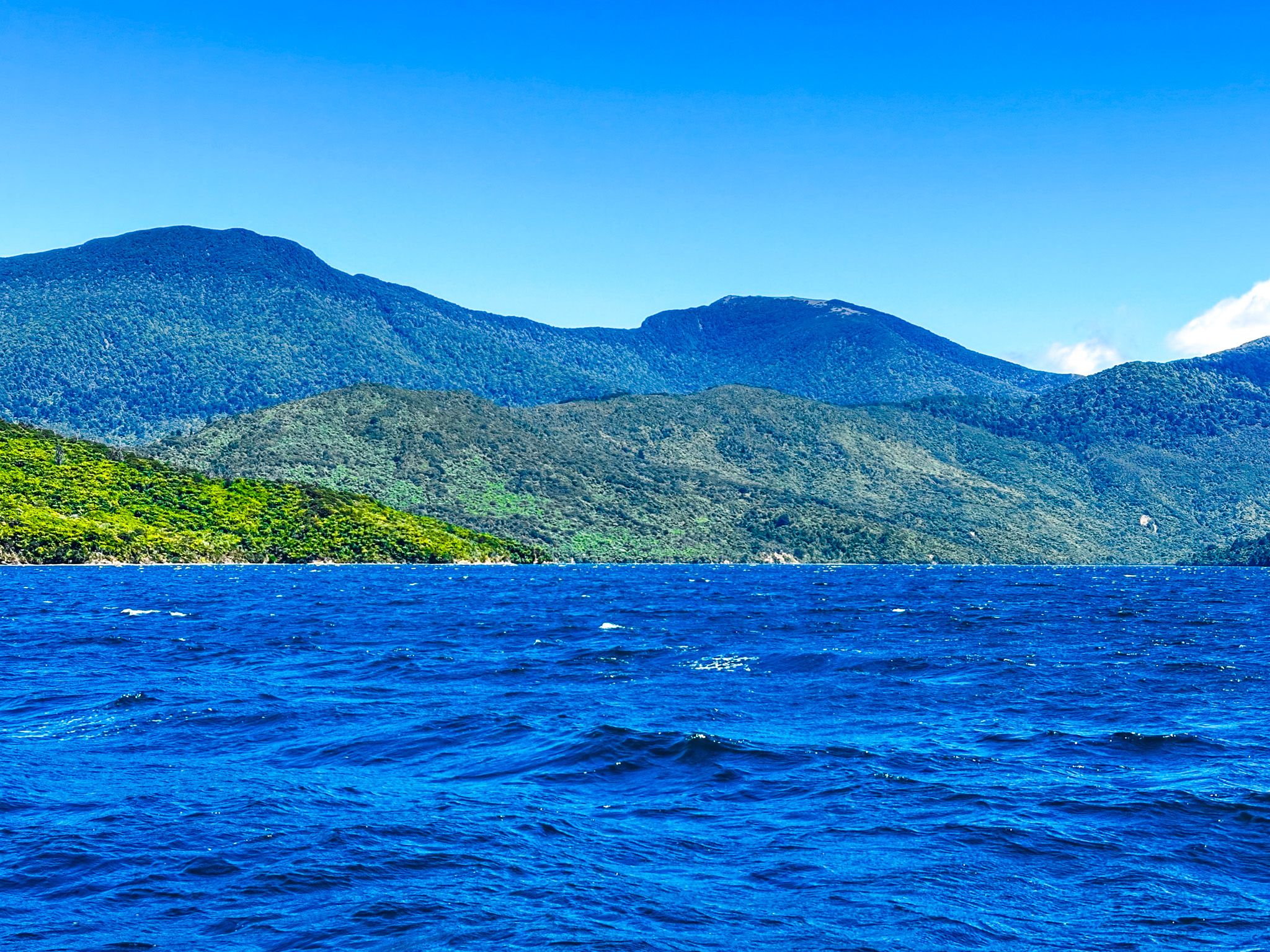Queen Charlotte Sound / Tōtaranui is the most easterly of the sounds in the Marlborough Sounds at the top end of the South Island. It contains Picton, the only sizeable town in the sounds. The inter-island ferry transits the sound, then Tory Channel, from Picton to Wellington on the North Island. In addition, the 73.5 km multi-day hiking and cycling Queen Charlotte Track on the north side of the sound, from Ship Cove to Anakiwa, is popular.
The sound is defined by long, jagged fingers of steep-sided terrain with ridge lines often over 400 metres high and peaks over 800 metres. Arapaoa Island is a feature of the northeastern end of the sound, with Tory Channel connecting the sound to Cook Strait between the island's east side and the mainland. Several smaller islands mark the channel to Cook Strait on the island's west side.
Many bays and coves are scattered along the sound, often with a few houses and holiday homes with jetties. A few can be accessed on the Queen Charlotte Track, but most can only be accessed by boat. Regular services and water taxis can be booked online or in Picton. Road access is limited to the southeast side of the sound between Picton and Whatamango Bay on Port Underwood Road, to the southwest end between Picton and The Grove on Queen Charlotte Drive and at the northeast end to Anakiwa and the end of the Queen Charlotte Track.
Queen Charlotte Sound was part of the trading routes connecting North Island and South Island Māori, including pounamu and toki (adzes) made on nearby D’Urville Island. It was seasonally occupied by several iwi. These people were poorly treated in early land settlements, often granted land on steep, unsustainable sides of the sounds. In 2014, the sound was renamed Queen Charlotte Sound / Tōtarani following a Treaty of Waitangi settlement that acknowledged historical treaty breaches.
The sound was a popular destination for Captain James Cook. He first sailed in from the southwest side of the sound and climbed Arapaoa Island in 1770. From there, he spotted the strait between the Tasman Sea and the Pacific Ocean, hence Cook Strait. He named the sound Queen Charlotte Sound after the then-wife of King George III. One of the larger inlets became Endeavour Inlet after his ship. There are memorials to Cook’s visits at Ship Cove (start of Queen Charlotte Track) and nearby Motuara Island.
Subsequent European arrivals began with whaling, which persisted into the early 1900s, then farming. Visit the Picton Museum to explore this history. Most of the native forest in the sounds was cut down and replaced by pasture and exotic pines. Pockets of mature forest persisted around what is now Furneaux Lodge, on the coast north of Anikawa and around Resolution Bay and Ship Cove. In the last 50 years, the change has been dramatic with the widespread reestablishment of natives. The forest and aquatic wildlife ecosystem is being restored, and most of the sound will be mature native forests within the next 100 years.

